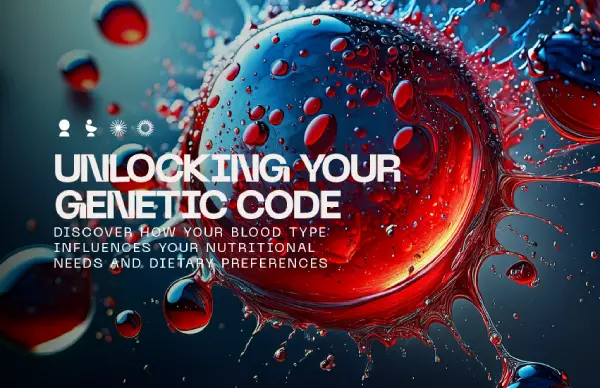Blog
Blood Type Diets: Personalized Nutrition or Pseudoscience?

Contents
Explanation of Blood Type Diets
Blood Type and Nutritional Requirements
Personalized Nutrition vs. One-Size-Fits-All Approaches
Alternative Approaches to Personalized Nutrition
Conclusion
Blood type diets have become so popular, it’s leaving many to question its validity. Could eating for your blood type actually be beneficial to your health?
Personalized diets are an integral part of successful results in naturopathic medicine. Following a blood type diet, however, isn’t quite as personalized as you’d like. Yes, they account for the typical needs of your particular blood type, but they discount your specific allergies or conditions.
We have no solid scientific evidence to prove the benefits or success of blood type diets. Many people who have tried them, however, report their satisfaction.
Is there merit to this dieting craze?
Let’s find out! Join us as we investigate the history and scientific basis of this approach. We’ll also explore the controversies and skepticisms surrounding the blood type diets.
Explanation of Blood Type Diets
The concept of blood type diets is to make health and nutrition changes according to your blood type and genetics. The general belief is that your blood type helps to determine how you’d react to certain foods, habits, and triggers.
Dr. Peter D’Adamo explains the idea of the blood type diet in his 1996 book, “Eat Right for Your Type”.
The naturopathic doctor hypothesized that our dietary habits trace back to ancestral tribes and communities. If, at some point, our ancestors only had access to certain foods, for example, it could affect our ability to tolerate various foods now.
He explains that there is a link between the level of stomach acids and enzymes and various blood types (A, O, B, AB). Dr. D’Adamo introduces the thought that blood types determine which foods your body would digest best and which to avoid.
With further research, Dr. D’Adamo has updated his book to include the consideration for “antinutrients” or sugar-binding proteins. He’s also released “Live Right for Your Type”, which promotes a balanced approach to wellness.
Blood Type and Nutritional Requirements
According to Dr. D’Adamo, your blood type represents genetic ancestral traits, determining which diet we’ve evolved to thrive on. If we were to follow this approach, this is what your nutritional requirements would look like according to your blood type.
| Blood type | Thrives on: |
| A | Mostly vegetarian |
| B | High dairy |
| AB | Mixture of types A and B |
| O | High animal protein |
According to Dr. D’Adamo’s hypothesis, the blood group diets look as follows.
Type A
This group is also known as the agrarian or cultivator due to the connection made to farming practices. Dr. D’Adamo believes that people in this group have trouble digesting carbohydrates. They also do not metabolize animal protein and fat as well.
A gluten-free diet of organic foods is recommended while consuming fats in the form of plant-based products like olive or coconut oil. Nuts and seeds are also high on the “do consume” list while wheat flour, barley, and animal products should be avoided.
To maintain a well-rounded lifestyle, low-impact exercises like yoga, walking, and tai-chi are the best choices. To ensure that all vitamin and mineral requirements are met, take iron, calcium, and vitamin A and E supplements.
| Eat | Don’t Eat |
|
|
Type B
The ancestors of the nomadic group moved around a lot, giving them a higher tolerance for a greater variety of foods. As a result, people who fall in this blood group thrive on a well-balanced diet that contains macronutrients, similar to the paleo diet.
With a more balanced diet, comes a better tolerance for more stimulating exercises like running or cycling. Remember to stay well hydrated with plenty of water, green tea, and natural fruit juice.
| Eat | Don’t Eat |
|
|
Type AB
The AB group has the best of both worlds with a tolerance of all foods. Dr. D’Adamo says that “Type AB is the only blood type whose existence is the result of intermingling rather than evolution and environment. Thus, they share both the benefits and the challenges of both Type A and Type B blood types.”
Remain active with a mixture of intense and milder workouts. Remember to stay well hydrated with plenty of water, coffee, and green tea.
| Eat | In moderation |
|
|
Type O
The O group is believed to have ties to the hunters, consuming more meat, fish, and other animal products. This group has an advantage, being able to metabolize cholesterol from animal products and calcium from dairy.
An ideal fit is a low-carb diet that is particularly high in protein from meat and fish. Enjoy full-fat dairy products in moderation and focus on aerobic workouts to maintain a healthy level of activity.
| Eat | Eat less |
|
|
The premise for each of these diets is to consume whole, healthy foods instead of processed. They should be used as a guideline and adjusted according to your specific needs.
There are no studies to suggest that these are definitive dietary findings. A summary of the studies done regarding this hypothesis, however, are as follows:
| Year of study | Findings |
| 2014 | 1,455 participants followed the type A diet, showing improved health markets. The result was not isolated to those with type A blood. |
| 2018 | 973 overweight participants confirmed that matching a blood group to a diet did not combat cardiometabolic disease markers. |
| 2020 | 68 participants followed a low fat vegan (type A diet) diet for 16 weeks.The results showed no significant difference in cardiometabolic changes across the varying blood groups. |
Personalized Nutrition vs. One-Size-Fits-All Approaches
Despite the lack of scientific evidence, there may be some merit to the hypothesis of the blood type diets. It is best, however, to also consider the individualized scenarios of each person.
Following a one-size-fits-all solution eliminates your unique requirements and preferences. Personalized nutrition, on the other hand, takes every aspect of what makes you unique into account. The intent is to identify your nutritional goals, where you currently are, and identify gaps that need attention.
The approach to personalized nutrition begins with an evaluation of your current eating habits—what we eat, when, how, where—as well as allergies, preferences, and cultural practices. The assessment also considers particular health concerns or goals that may impact your food choices.
This approach to naturopathic medicine considers every aspect of your life—fitness level, mindful activities, health risks, your environment. It provides a type of “road map” to help you reach your overall health goals through clear guidance.
One-size-fits-all nutritional solutions present a significant risk as they oversimplify the recommendations to accommodate everyone. It does not account for environmental factors that may impact your ability to follow the provided plan and reach your health goals.
Alternative Approaches to Personalized Nutrition
With no scientific evidence to support claims, it’s tough to know whether the blood type diets work or not. Could the positive results be a placebo effect?
The truth is that, if you have the right mindset and psychological approach, you’ll feel motivated to work harder at reaching your goals. Combine the added effort with the change in diet, and you’ll believe this approach works.
Some concerns about the blood type diet includes:
- Doesn’t account for personal preferences
- Overlooks existing health concerns
- Difficult to maintain
- Overly restrictive
The diet that you follow should be a lifelong change. Any short-term adjustments will only result in reverting back to old habits once done. Making a lifestyle change instead of following a diet means that you’ll see satisfactory results for a long time to come.
It’s essential to be realistic about your goal and honest about your habits when determining the changes that are required. Here are some actionable tips to follow:
- Eat more fresh vegetables and fruits.
- Increase your fiber intake with legumes, nuts and seeds in moderation.
- Get more proteins from plant sources and animal products like beef, eggs, poultry, fish, and dairy.
- Reduce sugar, refined grains, and processed fats.
- Limit FODMAP carbs if you have digestive problems.
- Avoid food that triggers allergies like gluten, dairy, eggs, nuts, and shellfish.
- Get healthy fats from olive or coconut oil, avocado, nuts, and seeds.
Conclusion
Following the blood group diet could be significantly beneficial to reaching your health goals. But it’s always best to consult a professional before making a drastic dietary change.
Reach out to our team of experts at LIVVNatural for a comprehensive assessment of your current lifestyle, goals, and needs. We’ll help you get on the path of your overall wellness journey, tackling your health from every direction.
What do you have to lose other than bad health?
Author: Dr. Jason Phan NMD – Founder of LIVV Natural – Anti-aging – regenerative medicine – peptide therapy


